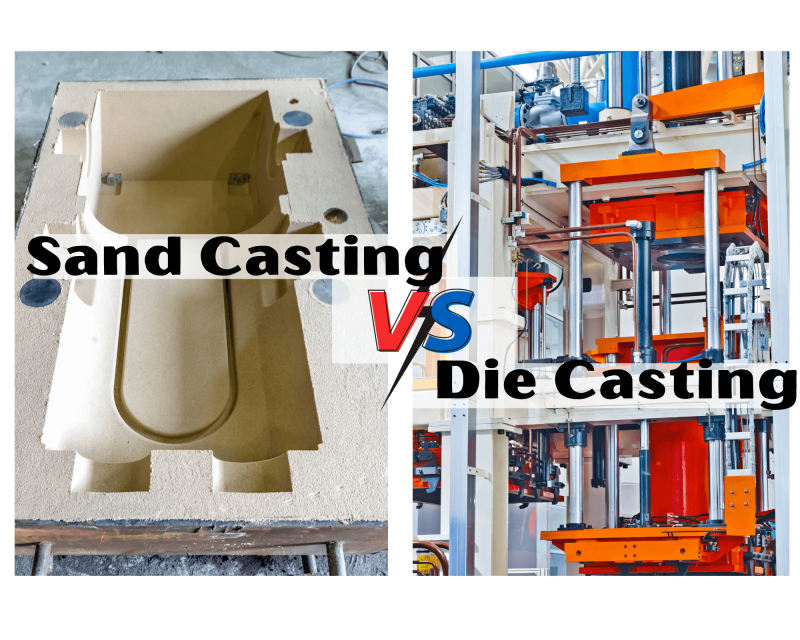Exploring Distinctions: Die Casting vs. Sand Casting in Metal Manufacturing
Introduction:In the realm of metal manufacturing, two prominent techniques, die casting and sand casting, play pivotal roles in shaping a diverse array of products. While both methods contribute to the creation of metal parts, they differ significantly in terms of their processes, applications, and end results. This article delves into the nuances of die casting and sand casting, elucidating the disparities between them and guiding readers toward a better understanding of the most suitable method for specific manufacturing requirements.
Die Casting vs. Sand Casting – Unveiling the Variances:
The Process:
Die Casting: A precise and efficient method involving the injection of molten metal into a reusable steel mold (die) designed to shape the final product. The die is opened, and the finished part is ejected after solidification.
Sand Casting: A traditional process that commences with creating a pattern of the desired part, followed by the formation of a sand mold around the pattern. Molten metal is poured into the mold, and after cooling, the sand mold is broken to retrieve the casting.
Complexity and Precision:
Die Casting: Offers high precision and intricate shapes with excellent dimensional accuracy, making it suitable for producing parts with fine features.
Sand Casting: Generally less precise, more suitable for less complex shapes, and may result in rougher texture and lower dimensional accuracy.
Cost and Production Volume:
Die Casting: Initial mold costs are higher, but it becomes cost-effective for large production volumes due to rapid cycle times.
Sand Casting: Molds are comparatively less expensive, making it suitable for low to medium production volumes and specialized components.
Surface Finish and Material Selection:
Die Casting: Smoother surfaces, finer finishes, and a wide range of material options, including aluminum, zinc, magnesium, and alloys.
Sand Casting: Rougher surface finish with a broader material selection, including iron, steel, bronze, and other metals.
Design Flexibility:
Die Casting: Greater flexibility for intricate shapes, thin walls, and intricate patterns.
Sand Casting: Moderate design flexibility, well-suited for larger, bulkier parts emphasizing size and functionality.
Tooling and Lead Time:
Die Casting: Requires dedicated and precision-machined molds, resulting in a longer lead time for tooling but shorter cycle times in production.
Sand Casting: Shorter lead time as patterns and molds are relatively quick to produce, making it suitable for projects with tight deadlines or quick prototyping.
Environmental Considerations:
Die Casting: Minimizes material waste with reusable molds but involves energy-intensive processes and metal melting.
Sand Casting: Uses recyclable sand molds but may generate more waste due to additional machining, and proper disposal of used sand is crucial for environmental considerations.
Conclusion: Understanding the distinctions between die casting and sand casting empowers manufacturers to make informed decisions based on their specific needs, whether it be precision, volume, cost considerations, or environmental impact. Each method offers unique advantages, and the choice between them depends on the desired outcomes and the characteristics of the products being manufactured.

Dongrun Casting have 20000 square meters facility houses and 200 production & test equipment, From quotation and tooling design to casting and finished machining, we can work with you at every stage. We serves wide range of industries-from Fortune 500 corporations to small and midsize OEMs. Our products includes: Automotive&Trucking, Electric Utility & Communications, Metering System, Hydraulic Industry, Medical Devices, Lighting, Fuel and Gas Pressure, Furniture parts.
More Details : www.dongruncasting.com
